We all have that one empty wall in our house that we just can’t seem to style (please tell me I’m not alone). Often you will see this with larger walls where the wall can feel empty and unintentional even with furniture. However, don’t be fooled. It’s not just large walls that can give you a hard time.
Smaller empty walls can also be quite a challenge, especially when they are located in a peculiar area of your home. So what do you do with your awkward empty wall and how do you make it look more designer? Well, I’ve got stylish solutions you can use in your farmhouse. But first, you need to understand when not to.
Contents
When To Leave An Empty Wall Empty
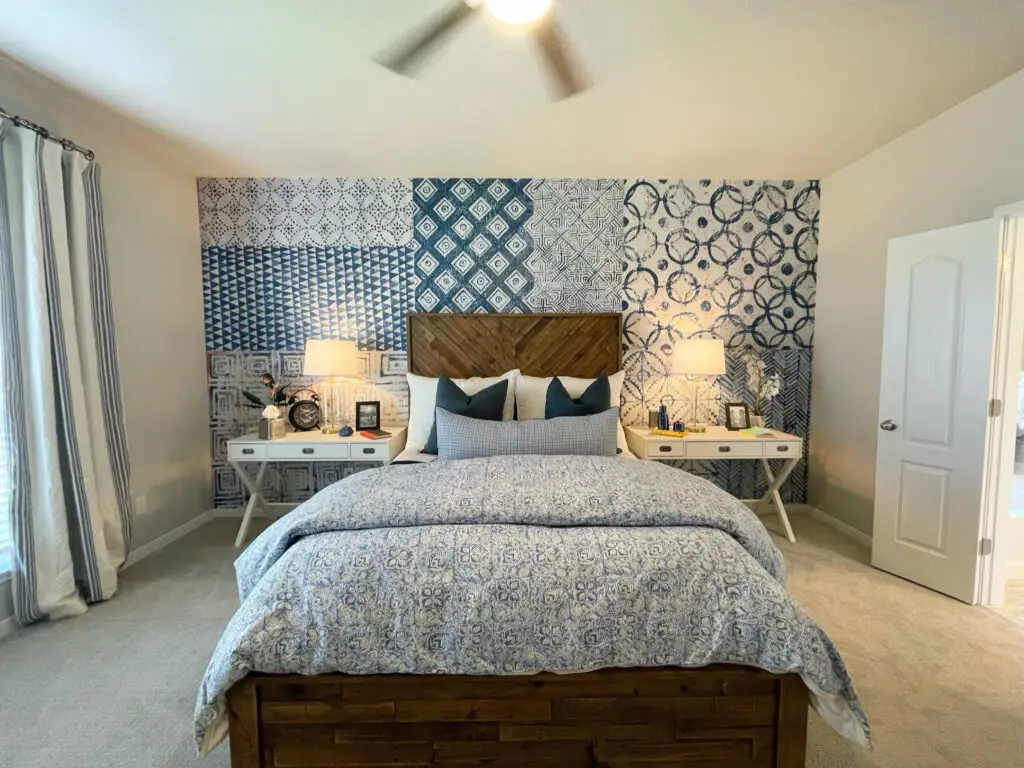
This may kill the maximalist a little, but the truth is that not every wall in your home needs to be filled with decor. Instead, it’s actually encouraged to leave walls blank to give your design room to breathe. Unfortunately, or rather fortunately, design isn’t paint by numbers so I can’t tell you exactly which walls to leave blank in your home. I can, however, give you some guidelines on when not to decorate.
Here are a few times you should refrain from tacking up that artwork:
- In a very crowded or busy room
- The wall next to a busy wall (wallpaper or artwork)
- When the room already has a very prominent architectural or design feature as a focal point
- When it just doesn’t feel right
Now, if you still feel like you need to style your empty wall, let’s check out the three stylish solutions to help elevate that empty wall.
Option #1
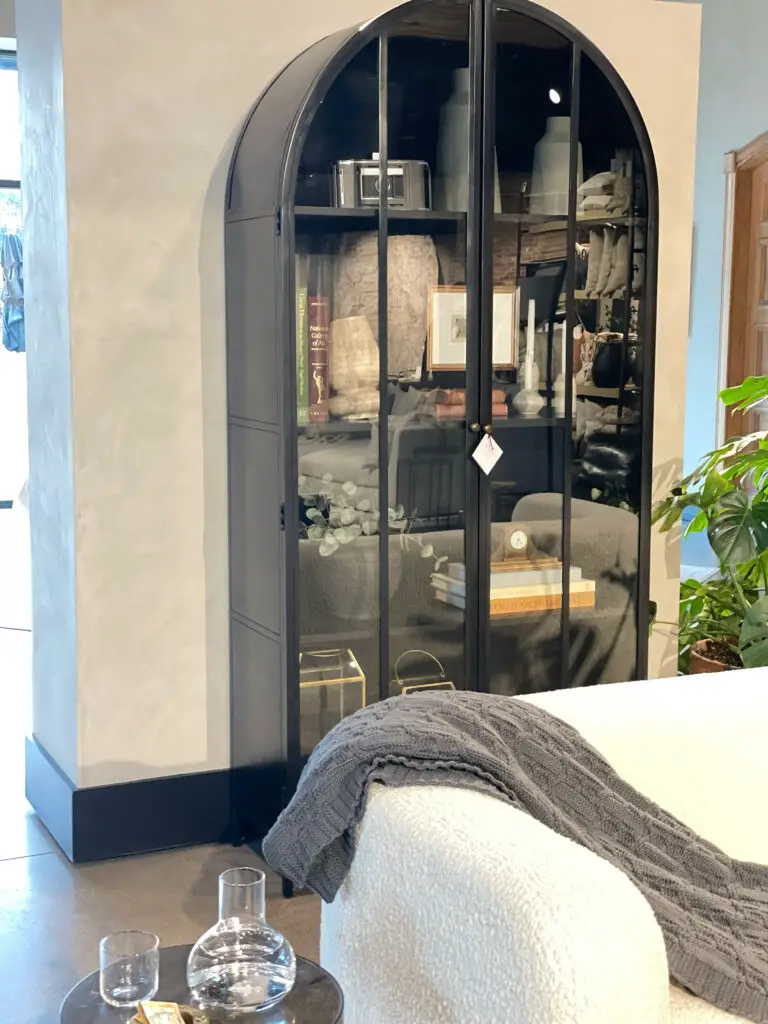
Let’s start simple. With a medium to small-sized wall, you can usually stick to one piece. For instance, an extremely easy and designer solution to your empty wall is to add a large cabinet. It’s simple, stylish, and flexible.
You have control over the cabinet you choose. If you pick a bold cabinet with a unique design or color, you can afford to keep your shelf styling on the simpler side. Meanwhile, if you pick a simple silhouette for a more timeless look, you can afford to go a little wilder with your decor. Either way, this presents an excellent opportunity to tie the room together by repeating certain patterns, colors, and textures from around your room.
Option #2
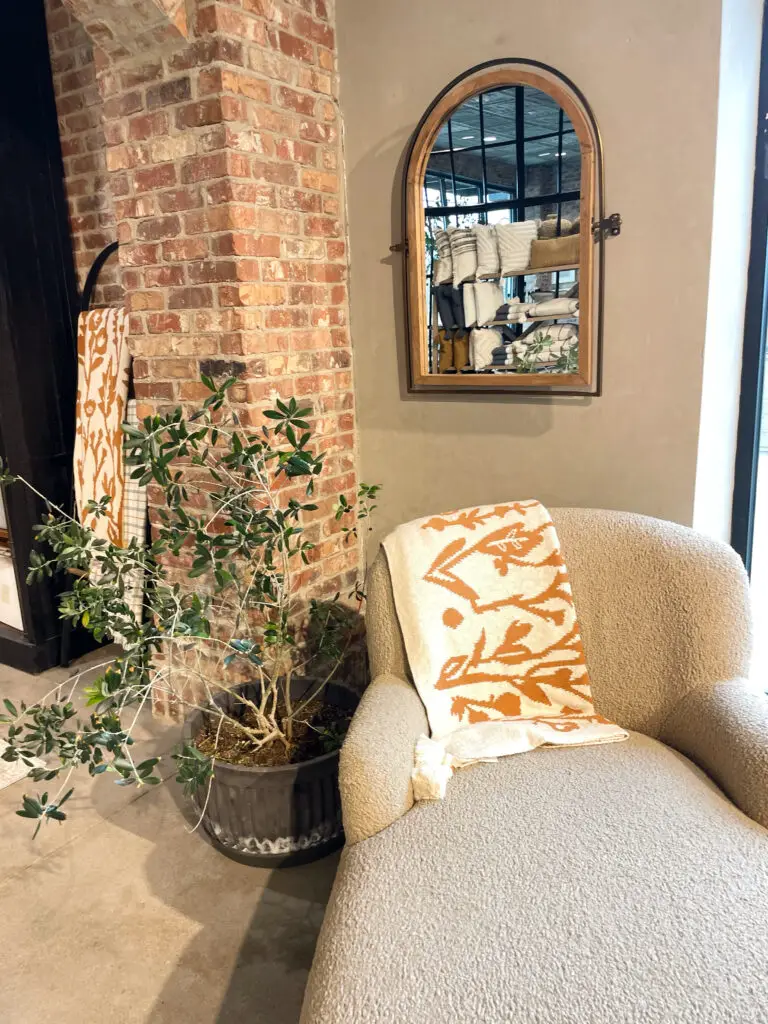
Is the cabinet not tickling your fancy? Not to worry, try adding some additional seating and artwork. This option requires a bit more room in your floor plan, but it’s still an excellent solution if you have the space. It’s also fairly versatile so it can work in most spaces in your home.
Whether it’s a corner of a room or placed dead in the middle of a blank wall, this seating option can quickly elevate any space and add more function. Depending on the amount of space you have, you can opt for a bench, one chair, or a pair of chairs. Make sure you are mindful of the flow of the room and choose the option that best fits your floor plan.
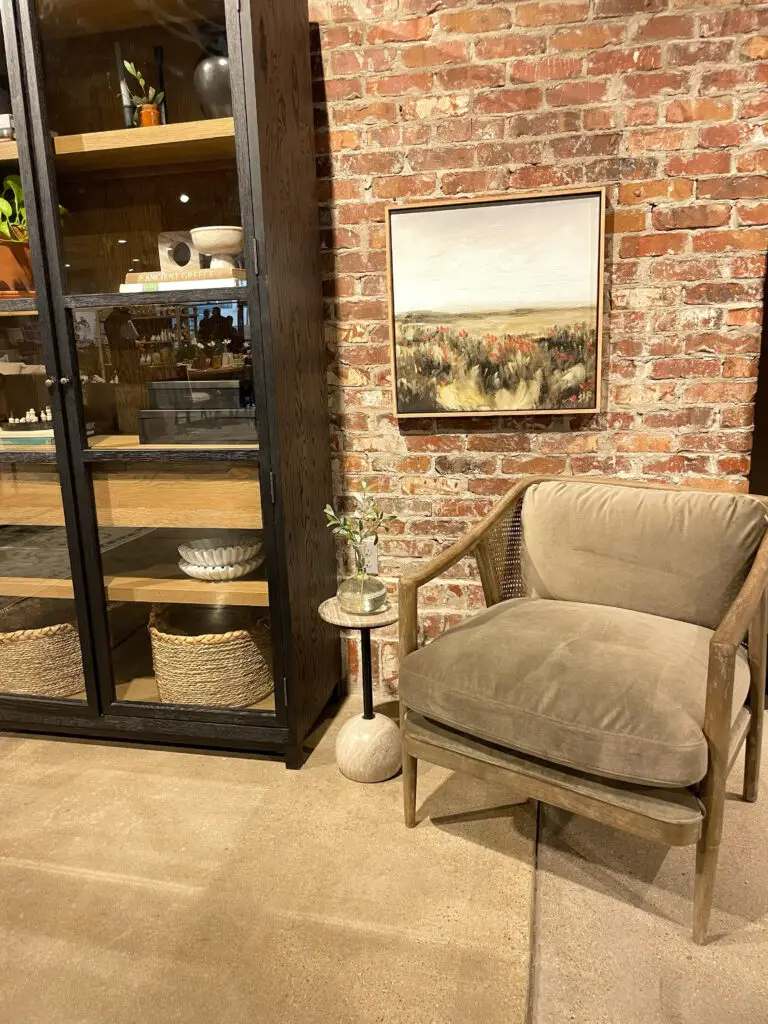
Once you’ve selected your chairs, visualize the space left above them. Is it more of a tall rectangle or is the wall space behind it wider than it is tall? Your selected artwork should mimic the space above, but should not reach wider than the width of your selected seating option.
Does your wall or space still feel empty or unfinished? Add a large plant or tree on either side. The added visual texture will help fill the space while the height will help draw the eye up making the room feel larger.
Option #3
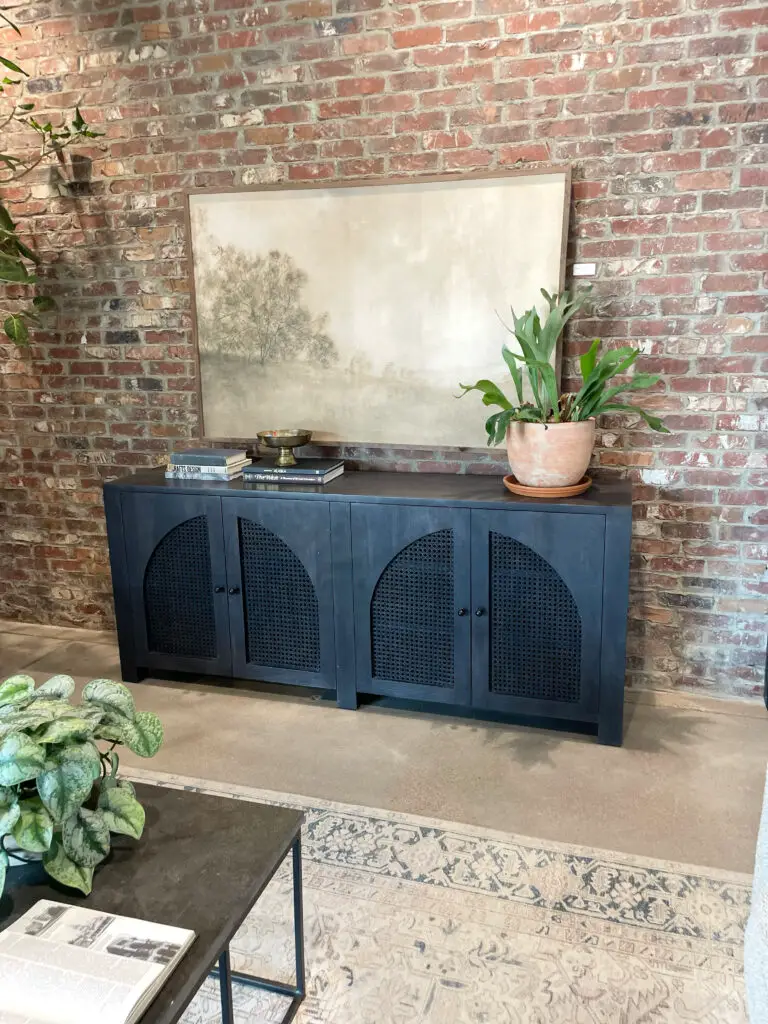
Do you have a wide wall and need some extra storage and a little extra style in your space? Then this is the perfect solution for you. Grab a long dresser or side table and push it against the wall. I recommend measuring to find one that doesn’t leave more than a couple of feet on either side or else it may feel disproportionate.
Next, you will want to anchor the dresser or console table with a piece (or pieces) of art. Follow the same guidelines as you did with option #2. Once you’ve found your dresser and art piece, all that’s left is to accessorize. If you need help decorating the furniture piece on your empty wall, check out these simple dresser styling tips.


